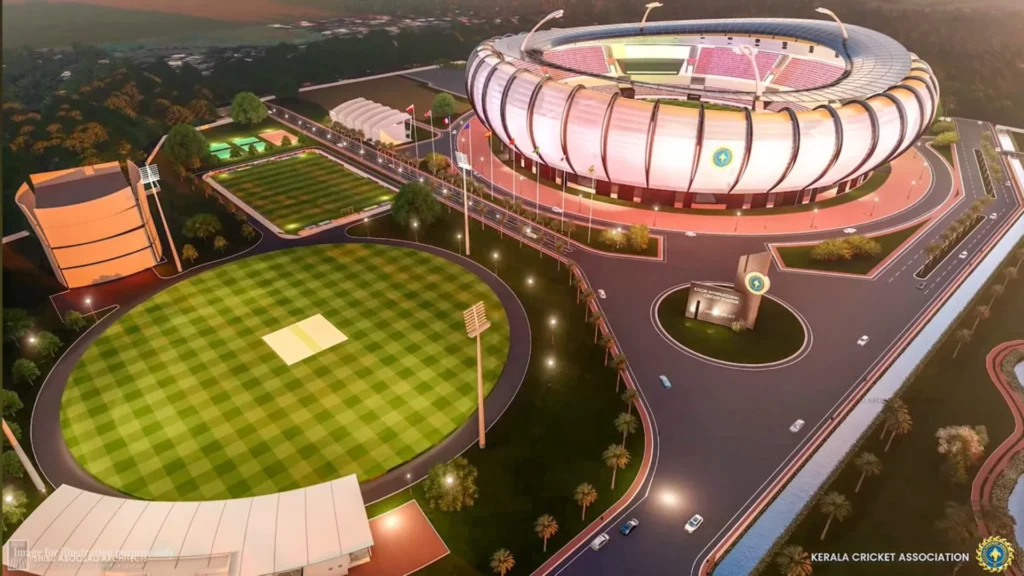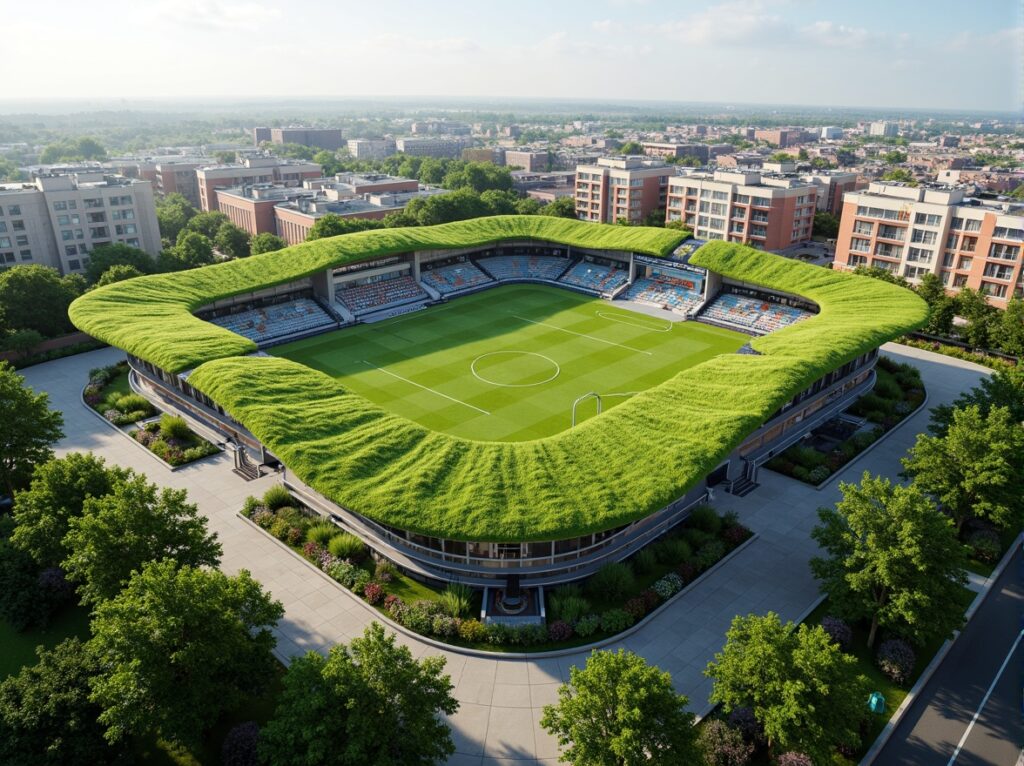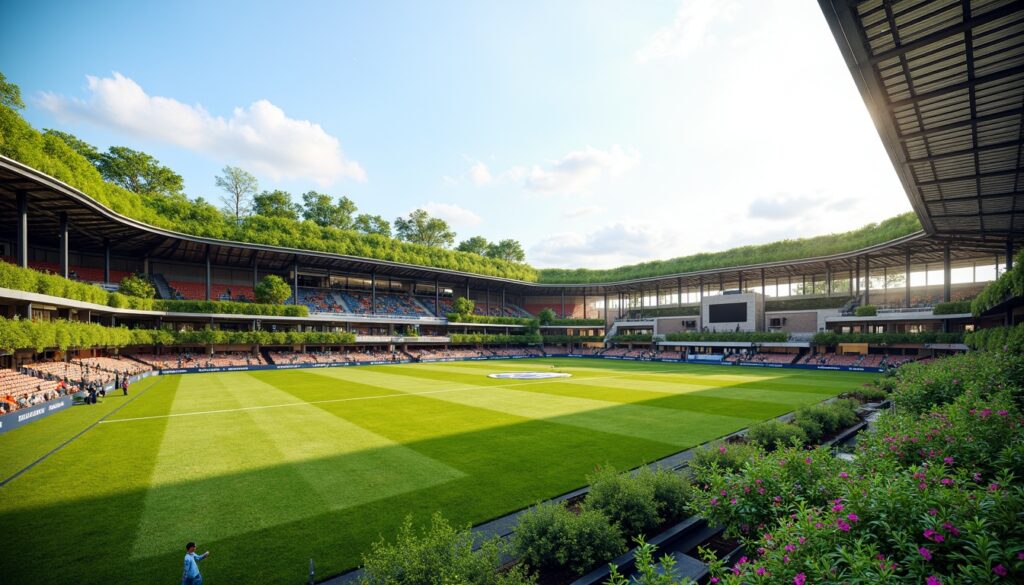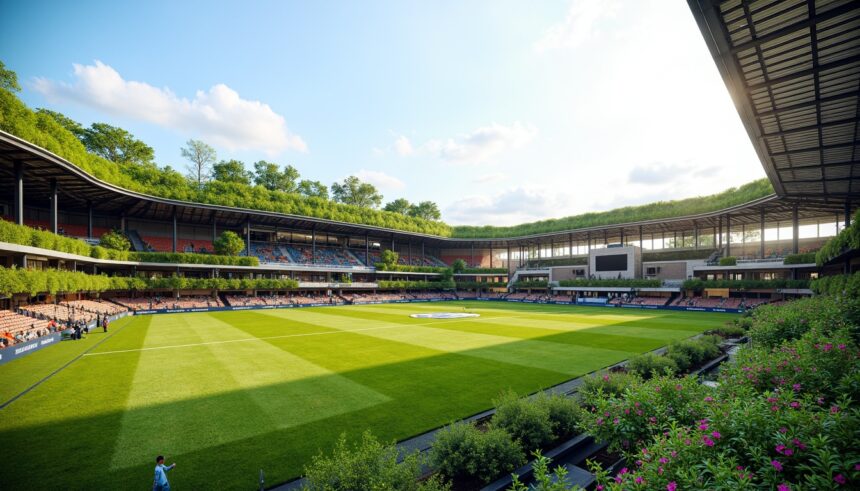Sustainable Stadiums,अगर आप sports, architecture और urban development को closely follow करते हो, तो आपने notice किया होगा कि 2025 में India’s Tier-1 cities जैसे Delhi, Mumbai, Bangalore और Hyderabad में एक नया trend तेजी से उभर रहा है — sustainable stadiums। अब stadium सिर्फ cricket या football matches host करने की जगह नहीं रहे, बल्कि ये eco-friendly, tech-enabled और green infrastructure के symbols बन रहे हैं।
यानी sports + sustainability = future of stadium design।
क्यों Sustainable Stadiums की जरूरत पड़ी?
भारत जैसे developing nation में जहां population pressure और urban pollution लगातार बढ़ रहा है, वहां हर बड़े infrastructure project का environmental impact directly देखा जाता है। Stadiums traditionally high-energy consuming spaces होते हैं — floodlights, AC, water consumption, construction material और waste generation बहुत ज्यादा होता है।
लेकिन अब climate change, carbon neutrality goals, और India’s 2070 net zero pledge के बाद stadium designs में eco-friendly thinking को integrate करना जरूरी हो गया है।

Sustainable Stadiums की Core Features
अगर हम sustainable stadiums India 2025 की बात करें, तो इन stadiums में कुछ common eco-friendly features देखने को मिल रहे हैं:
- Solar-Powered Energy: Rooftops और parking lots पर solar panels लगाकर stadium energy needs पूरी करते हैं।
- Rainwater Harvesting: Pitches और washrooms के लिए recycled water का इस्तेमाल।
- Green Construction Material: Low-carbon cement और recyclable steel का उपयोग।
- Waste Management: Zero-waste policies, segregation bins और composting units।
- Energy-Efficient Lighting: LED और smart lighting systems।
- Smart Crowd Management: Digital ticketing और contactless entry systems।
ये सिर्फ stadiums को eco-friendly नहीं बनाते, बल्कि long-term में operational costs भी कम करते हैं।
कौन-कौन से Tier-1 Cities Lead कर रहे हैं?
1. Mumbai – Wankhede Stadium की Green Push
Mumbai का iconic Wankhede Stadium पहले से ही solar energy और water recycling system अपनाना शुरू कर चुका है। 2025 में यहां green seating arrangements और smart cooling systems introduce किए जा रहे हैं।
2. Bangalore – Chinnaswamy Stadium का Example
इस stadium को BCCI और Karnataka State Cricket Association ने एक model eco-friendly stadium बनाने का plan किया है। Solar rooftop, rainwater harvesting और electric vehicle charging stations यहां के नए highlights हैं।
3. Delhi – Arun Jaitley Stadium का Redesign
Delhi जैसे polluted city में stadiums को air filtration systems और green walls के साथ redesign किया जा रहा है। यह सिर्फ players ही नहीं बल्कि fans को भी healthy environment देने का प्रयास है।
4. Hyderabad – Uppal Stadium की Sustainability Drive
Hyderabad का Rajiv Gandhi Stadium electric buses से connectivity और digital crowd management systems को adopt कर रहा है ताकि carbon emissions कम किए जा सकें।
Fans के लिए क्या बदल रहा है?
Sustainable stadiums सिर्फ architecture तक सीमित नहीं हैं, ये fans के experience को भी transform कर रहे हैं:
- Fans को cleaner washrooms और filtered water stations मिल रहे हैं।
- Smart ticketing से queues और paper waste कम हुआ है।
- Electric shuttle services से stadium तक पहुंचना अब eco-friendly है।
- कुछ stadiums में mobile charging stations powered by solar लगाए गए हैं।
इससे match watching experience ज्यादा comfortable और responsible बन रहा है।

Government और Private Partnerships का Role
India में eco-friendly infrastructure projects बिना government policies और private sector investment के possible नहीं होते। Ministry of Sports, Urban Development Ministry और BCCI जैसे bodies stadium projects को green certification दे रहे हैं।
Private players जैसे Reliance, Tata Projects और Larsen & Toubro green engineering solutions provide कर रहे हैं।
Global Examples से क्या सीख रहे हैं?
India अपने stadium projects में global examples से inspiration ले रहा है:
- Tottenham Hotspur Stadium (UK): Zero single-use plastic policy।
- Mercedes-Benz Stadium (USA): 100% renewable energy powered।
- Khalifa International Stadium (Qatar): World Cup 2022 में cooling system innovation।
इन्हीं models को देखकर Indian architects stadiums को ज्यादा efficient बना रहे हैं।
Challenges in Implementing Sustainable Stadiums
हर innovation के साथ कुछ challenges भी आते हैं:
- High initial investment cost।
- Maintenance और technical expertise की कमी।
- Public awareness और acceptance की कमी।
लेकिन experts मानते हैं कि long-term में ये investment financially और environmentally दोनों profitable होंगे।
Future of Sustainable Stadiums in India
By 2030, analysts predict करते हैं कि India के सभी major Tier-1 stadiums carbon-neutral बनने की दिशा में काम करेंगे। Government subsidies और international collaborations stadium projects को ज्यादा accessible बना देंगे।
Fans भी अब ऐसे stadiums को prefer कर रहे हैं जहां उनका entertainment और planet दोनों safe रहें।
निष्कर्ष
Sustainable stadiums India 2025 सिर्फ architecture का future नहीं, बल्कि ये एक cultural shift है। Sports अब सिर्फ game watching तक सीमित नहीं रहेगा, बल्कि ये responsible entertainment और environmental awareness का भी हिस्सा होगा।
Tier-1 Indian cities इस trend में lead कर रहे हैं और आने वाले 5-10 सालों में ये पूरी तरह से mainstream हो जाएगा।

FAQs
Q1: Sustainable stadiums India में कब तक common हो जाएंगे?
Experts का मानना है कि 2030 तक major Tier-1 cities के stadiums पूरी तरह से sustainable बन जाएंगे।
Q2: क्या sustainable stadiums की cost ज्यादा होती है?
हाँ, initial cost ज्यादा होती है, लेकिन long-term में energy savings और maintenance में फायदा मिलता है।
Q3: Fans को क्या फायदा होगा?
Fans को cleaner, safer और eco-friendly environment मिलेगा, साथ ही ticketing और transport ज्यादा convenient होगा।
Q4: क्या छोटे cities भी sustainable stadiums बनाएंगे?
हाँ, अभी Tier-1 cities lead कर रहे हैं लेकिन 2030 के बाद Tier-2 और Tier-3 cities भी इस model को अपनाएंगे।
Read More :- Low-Cost Tech Devices Helping Rural Students Crack Competitive Exams
Read More :- Metaverse-Based Skill Labs: Hands-On Training Without Physical Infrastructure













